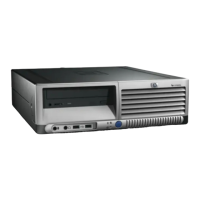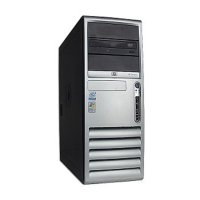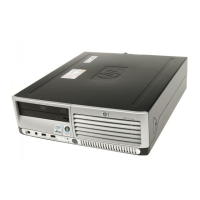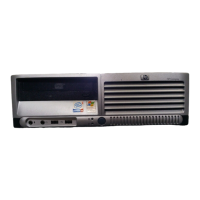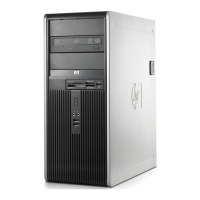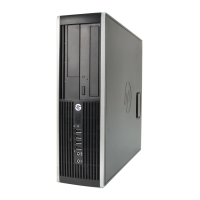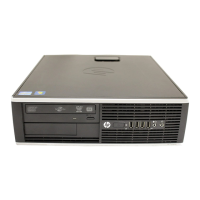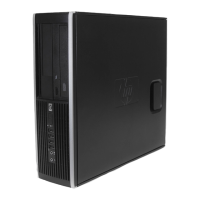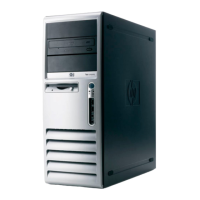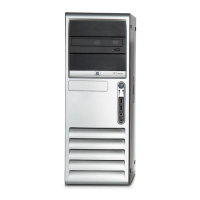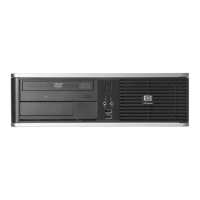

Do you have a question about the HP Compaq dc7100 CMT and is the answer not in the manual?
| Memory | Up to 4 GB DDR2 SDRAM |
|---|---|
| Operating System | Windows XP Professional |
| Processor | Intel Pentium 4 |
| Chipset | Intel 915G Express |
| Storage | 40GB to 160GB SATA HDD |
| Graphics | Integrated Intel Graphics Media Accelerator 900 |
| Optical Drive | DVD-ROM, CD-RW, DVD+/-RW |
| Network | Integrated Gigabit Ethernet |
| Form Factor | Convertible Minitower |
| Expansion Slots | 1 PCI Express x16, 3 PCI |
| Ports | USB 2.0, serial, parallel, PS/2, audio in/out |
Details the system architecture based on Intel Pentium 4 processor and 915G chipset.
Provides environmental, electrical, and physical specifications for the systems.
Details the Intel Pentium 4 processor features and architecture.
Describes the DDR memory architecture and DIMM configurations.
Covers security, power management, temperature, and overall system status.
Describes the USB interface, ports, and data formats.
Describes the Intel integrated graphics controller (IGC) functions.
Details on the power supply assembly and its control mechanisms.
Covers functions related to the boot process, including boot device order.
Describes how to configure system functions using the Setup utility.
Lists POST messages and their probable causes.
